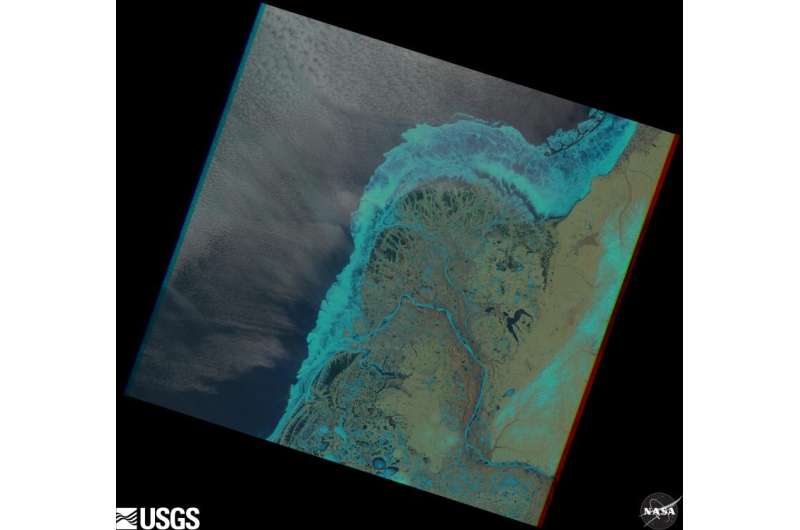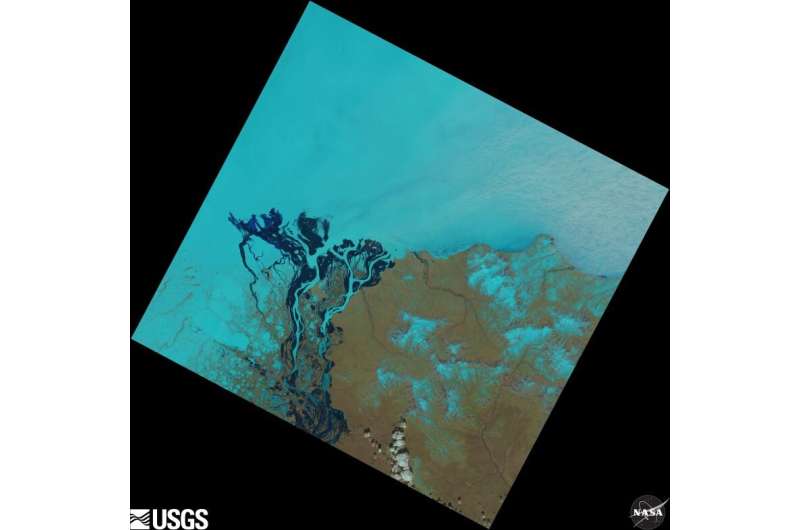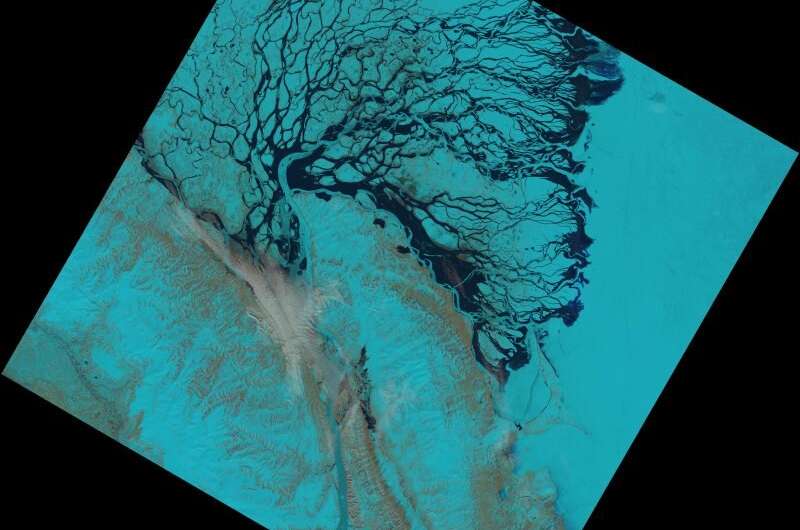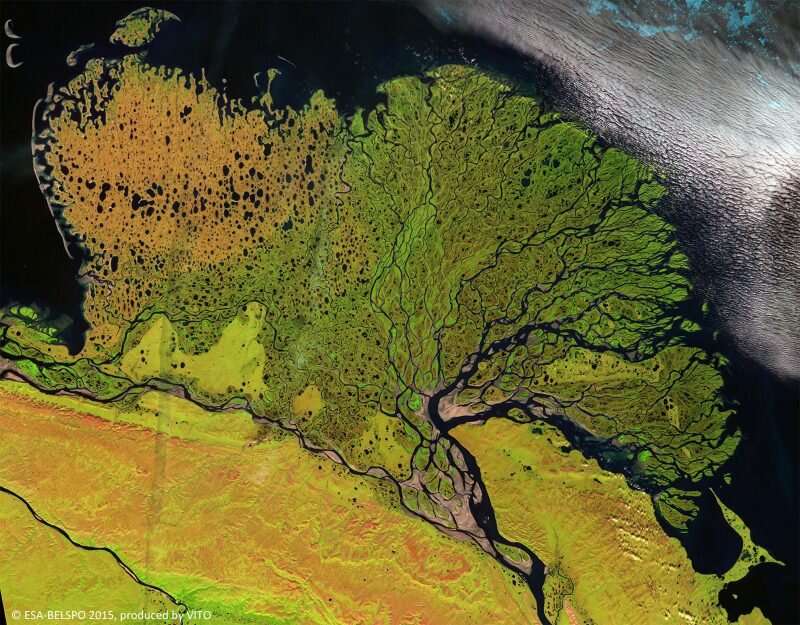Melting ice may change shape of Arctic river deltas

Thawing ice cover and easily erodible permafrost may destabilize Arctic river deltas, according to new research.
A new study in the AGU journal Geophysical Research Letters finds sea ice and permafrost both act to stabilize channels on Arctic river deltas.
"Your channels tend to stay in one place when you have really thick ice or when you have permafrost that's really hard to erode," said Rebecca Lauzon, environmental educator at the Rochester Museum and Science Center's Cumming Nature Center in New York and the lead author of the new study.
Ice cover on Arctic deltas is expected to thin while permafrost is expected to thaw along the banks of Arctic rivers due to climate change.
The new study finds these changes could destabilize deltas in the far north of the globe, making them less resilient to rising sea levels. Less stable deltas could also impact Arctic ecosystems, creating winners and losers among delta species and even affecting the global carbon cycle.
Changing deltas
The new study examined how ice cover and permafrost affect sediment transport in Arctic deltas and provides insight as to how coastal dynamics may change in a warming Arctic. Sediment movement is important because it defines the shape river deltas take. It also provides food and habitat for delta species and oceanic creatures that feed off the organic matter which makes it out to sea.

Previous research on Arctic river deltas found that permafrost along the banks of rivers affected riverbank erosion rate, and thick ice covers resulted in constricted and faster river flow.
Lauzon, who was working an internship at Los Alamos National Laboratory during the time of the research, and her co-authors, created two versions of a model: One to predict the effects that ice thickness might have on Arctic river deltas and another to predict the effects of permafrost strength.
The study's authors found that when ice cover is thicker on rivers, or with more stable permafrost along the banks, river deltas tended to be characterized by deeper, more stable channels which acted as funnels, carrying sediment out to the ocean.
But thinner ice or more easily erodible permafrost along the banks caused the deltas to destabilize, with shallower water channels cutting through shifting sediment banks.
Part of the reason these channels become less stable is due to a loss of overbank flooding, which decreases with thinner ice and more erodible permafrost. Overbank flooding, which happens with thick ice cover and more resistant permafrost, causes sediment to be deposited along the tops of channel banks. Over time this results in higher riverbanks, which increases the stability of deltas.

But with less overbank flooding, deltas may become more vulnerable to the effects of climate change, according to Anastasia Piliouras, an earth scientist at Los Alamos and a co-author of the new study.
"They then might be less resilient to sea level rise," she said.
Ecological, carbon cycle impacts
Piliouras said changes to the geography of river deltas could have ecological impacts and create winners and losers among species which live in the delta, favoring those that prefer more frequent flooding while negatively impacting species that prefer dry land.
Lauzon said there could also be impacts on the carbon cycle as more organic material could be released from the delta areas, though more research is needed to determine the overall effects thinner ice and unstable permafrost would have on carbon release.

The study's authors hope to use their model to help understand what might happen to real deltas such as those of the Yukon or Mackenzie rivers in Canada or the Lena River in Russia. Piliouras said they have done some follow up research to check if real river deltas exhibit the characteristics they predicted from their models, and that future research should now look at tracking how less stable permafrost and thinner ice affects river deltas.
Furthermore, they are also working on research which shows how both factors taken together may affect river delta stability rather than only looking at permafrost or ice thickness in isolation as they did in this study.
More information: Rebecca Lauzon et al. Ice and permafrost effects on delta morphology and channel dynamics, Geophysical Research Letters (2019). DOI: 10.1029/2019GL082792
Journal information: Geophysical Research Letters
Provided by GeoSpace



















